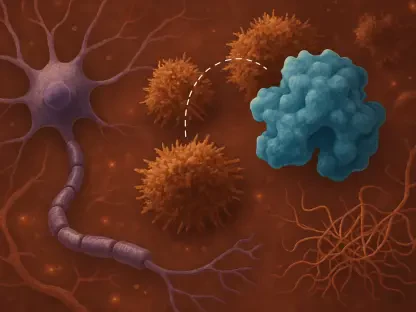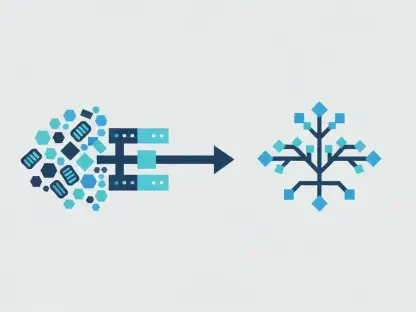The US FDA’s accelerated approval of Datroway (datopotamab deruxtecan) marks a notable advancement in the realm of lung cancer therapy. This approval is groundbreaking, as Datroway is the first TROP2-directed therapy sanctioned for lung cancer in the United States, specifically targeting a segment of non-small cell lung cancer (NSCLC) patients with EGFR mutations. Understanding the dynamics at play behind this drug’s approval is crucial for grasping its potential impact on the future treatment landscape and the broader pharmaceutical market.
Decoding Emerging Trends in Lung Cancer Treatment
Over the past decade, advancements in molecular biology have significantly influenced the development of targeted therapies in lung cancer. These therapies have moved away from traditional, less effective broad-spectrum approaches to more individualized and precise treatments. The introduction of Datroway illustrates this shift, catering to a subset of NSCLC patients who exhibit specific genetic mutations. This trend is shaping the oncology market by focusing efforts on therapies that can overcome resistance and improve patient survivability. Such significant progress in personalized medicine underscores the need for continual evolution within this sector.
Detailed Examination of Market-Specific Developments
Promising Clinical Outcomes Define Market Potential
The success of Datroway is underpinned by compelling clinical data. Pivotal trials such as TROPION-Lung05 and TROPION-Lung01 revealed a robust 45% objective response rate, with complete and partial responses in a significant number of patients. This data bolsters the growing reliance on precision medicine, proving that such interventions can yield impressive results where traditional therapies have failed. As Datroway transitions from trial success to market availability, its performance sets a new benchmark for efficacy in combatting resistant NSCLC.
Addressing Resistance: A Market Necessity
Resistance to conventional treatments, especially in patients with EGFR mutations, presents a notable obstacle within the NSCLC treatment landscape. While initial therapies may show promise, many patients face challenges with disease progression. Datroway, combining antibody specificity with chemotherapy’s potency, addresses this resistance issue in an innovative way. This advancement in overcoming treatment obstacles suggests a potential rise in demand within the pharmaceutical market for therapies with similar approaches and mechanisms.
Insights into Global Market Integration
The global oncology market is complex and varied, influenced by differences in healthcare infrastructure and regional access to novel therapies. Emerging markets often face unique challenges such as regulatory barriers and economic constraints, which can affect the integration of innovative treatments like Datroway. Understanding these dynamics is essential for navigating the introduction and expansion of such therapies in diverse markets, ensuring broader patient accessibility and adoption across different demographics.
Reflecting on Market Implications and Strategic Pathways
The entry of Datroway into the NSCLC treatment market is transformative, creating a ripple effect in terms of market development and patient care. Looking forward, strategic insights can be gleaned for healthcare professionals and stakeholders. Oncologists are encouraged to incorporate genetic profiling more extensively in treatment plans, while policymakers should advocate for greater patient access to cutting-edge therapies. Pharmaceutical companies might also explore partnerships and collaborations to widen their market reach.
In summary, Datroway’s introduction signifies a pivotal moment in NSCLC therapy, shifting paradigms and expectations within the oncology field. By staying attuned to key developments and strategically leveraging these advancements, the medical community is poised to offer more tailored and effective care for lung cancer patients, setting a precedent for future therapeutic innovations.









